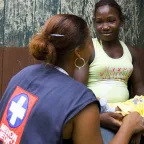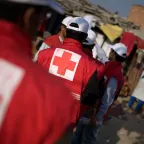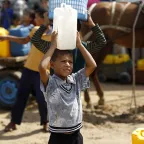Australia: Working to end violence against health care
… Attacks against health-care workers, hospitals and ambulances disrupt … Societies created the Health Care in Danger (HCiD) project, a global initiative to …
… Attacks against health-care workers, hospitals and ambulances disrupt … Societies created the Health Care in Danger (HCiD) project, a global initiative to …
… of the stories told by the new set of five Health Care in Danger posters. Based on real cases, they show …
… module , specifically designed to help health-care personnel understand the effects of … medical adviser of the "Health Care in Danger" project. "Anyone connected to internet …
… to safe access to and provision of health care in conflict for girls, boys, women and … Red Cross, is part of the Health Care in Danger project (HCiD). To learn more about the …

… the international community better protect health care providers and patients in the midst of war … discussed at a special event, Health Care in Danger: the way forward , co-hosted by the ICRC …
… Health Care in Danger newsletter - March 2016 The headlines … are being bombed, doctors attacked, and health-care facilities raided by combatants …

… Protecting health care is now a more pressing concern than ever. … Committee of the Red Cross's Health Care in Danger project, has devised a massive open …

… environment, worsening the risks to public health. This aggravated an already serious … (35,000 inhabitants) are still exposed to health hazards and the strong stench of … patients to hospitals and other health-care facilities, ambulance services, and Gaza's …

… "Health-care workers, facilities and transport must be … or misused," says Erin O'Connor, ICRC health delegate in Gaza. During the 2014 … to repair the facility. Health Care in Danger is an ICRC-led project, which aims at …
… of the stories told by the new set of five Health Care in Danger posters. Based on real cases, they show …

Try one of the following resources:
Created in 1863, the ICRC library, alongside the ICRC archives, provides an indispensable documentary reference on the organization itself and international humanitarian law.
International humanitarian law is based on a number of treaties, in particular the Geneva Conventions of 1949 and their Additional Protocols, and a series of other instruments.
Customary international humanitarian law consists of rules that come from "a general practice accepted as law" and that exist independent of treaty law.